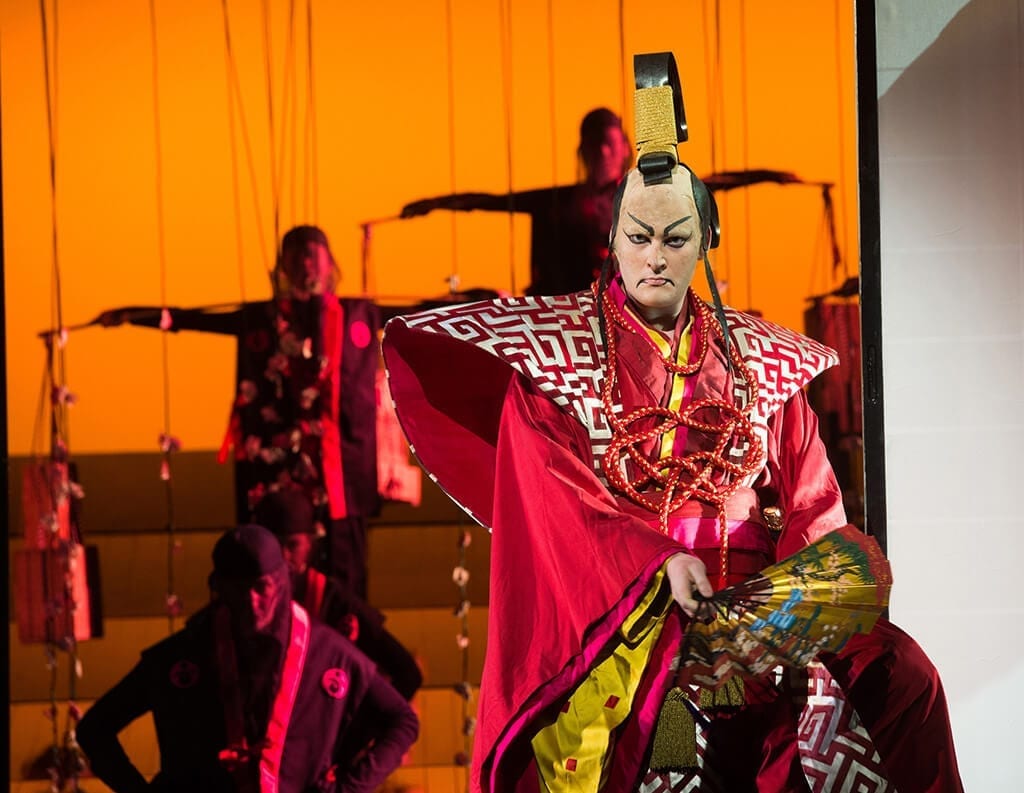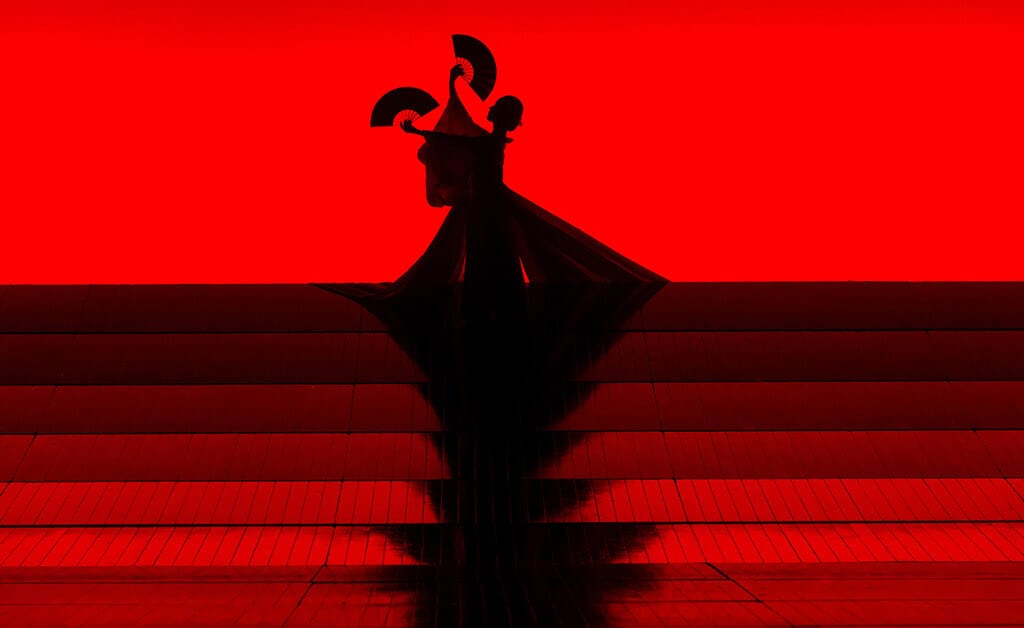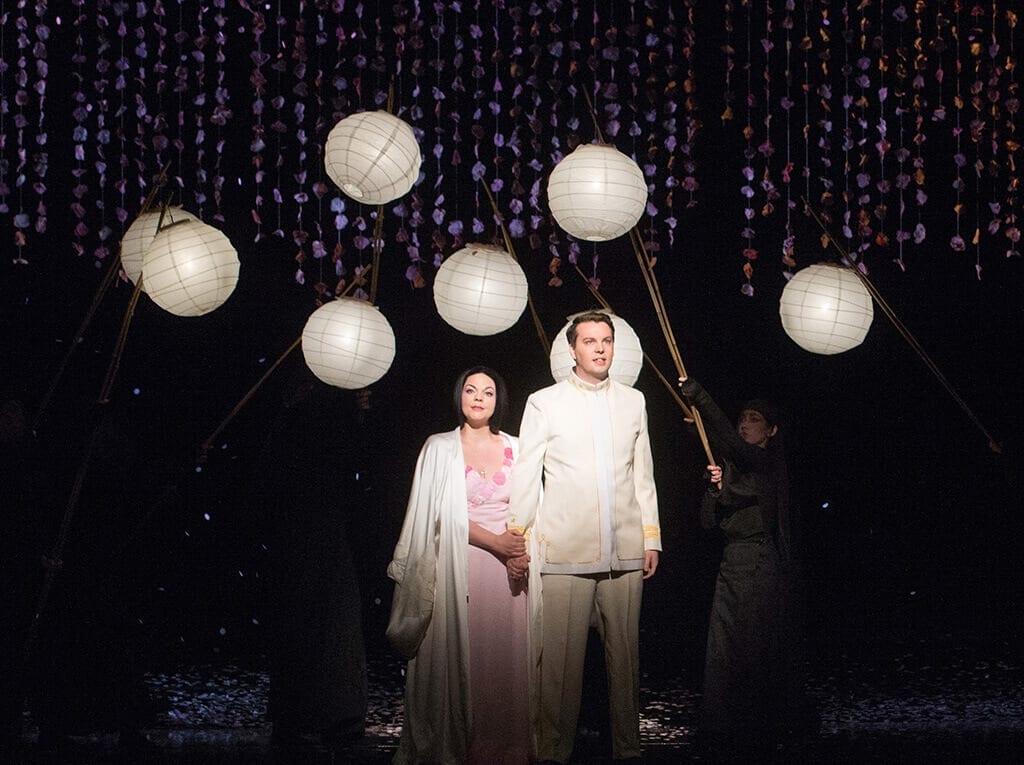After much acclaim, the late Anthony Minghella’s production of Puccini’s Madam Butterfly returns to the ENO for its sixth revival: revived by Sarah Tripple, conducted by Richard Armstrong, and co-produced with the Metropolitan Opera, New York, and the Lithuanian National Opera.
The stunning Japanese setting is carefully created by an evidently vibrant team: the set design by Michael Lavine, lighting by Peter Mumford, choreography directed by Carolyn Choa, and costumes produced by Han Feng, really are a treat to our eyes.
Each fragment of the performance successfully brings Japan to life on the London stage. The very opening act portrays Butterfly (beautifully sang and brilliantly interpreted by Rena Harms) in a geisha dance in front of a sharp electric red backdrop.
As the opera proceeds, we gradually see different layers of Butterfly’s character emerge among other foremost characters, including Pinkerton (sung and performed by David Butt Phillip) and the faithful Suzuki (interpreted by Stephanie-Windsor Lewis). She develops from young, energetic, slightly naïve girl to a wiser, more mature woman forced to face the harsh reality she had so long hoped to avoid — the realization that her marriage to her beloved Pinkerton is a hoax.
Rena Harms flawlessly brings this change of character to life in her pitch perfect performance, making it hard to believe that this is her role debut. Butterfly’s zest, vitality and passion in the first act juxtaposed against her agonizing pain when she is made to cruelly acknowledge the bitter truth about her ‘husband’ in the later acts is remarkable: especially the moment when she gives her son up for adoption to Pinkerton’s legal (American) wife who can provide a ‘better’ life for the child. Indeed, together with the captivating lights and bright piercing colour of the backdrops, the production powerfully conveys the dark reality many girls in nineteenth-century Japan faced when the government officially sanctioned the process by which Western travellers could acquire a Japanese girl or woman as their ‘wife’. In fact, the unease among the audience as the 15-year old Butterfly and her much older ‘husband’ disappear in the moonlight on their ‘wedding night’ continues to resonate throughout the auditorium.
What else is striking about this production is the use of puppetry (created by the expert puppeteers Blind Summit): a subtle nod to Japan’s traditional theatre, Bunraku. Gently manoeuvred by actors dressed in black whose faces are concealed by a black veil, each puppet glides effortlessly across the stage. The first represents Butterfly’s son. The mother and son bond here is more than just human, particularly during the scene where Butterfly, her son, and Suzuki, each lined up and kneeling on their mats, wait patiently (and in vain) for Pinkerton’s ship to arrive during the famous humming chorus. Though the puppet is unable to move his facial features like a human, he nonetheless is able to communicate his child-like innocence: not quite sure what he is being made to wait for. A further puppet is used in the final act to represent Butterfly herself. This puppet is waved in the air and passed from the hands of one man to another as though she were Ibsen’s Nora in A Doll’s House (1879) whose drama is closely related to that of Butterfly’s as she too gives up her children but for very different reasons.
The final scene leads to Butterfly’s inevitable death. Suicide was not particularly unusual for early Japanese widows who wished to join their late husbands in the afterlife as a sign of devotion, as was the case with the wife of Lieutenant Asada in Tokyo during the last war of China. But Butterfly’s tragic end is far from a sign of devotion and more of a sign of desperation. Interestingly, though all through the opera we see a woman who is treated like a doll and made to obey the rules of men imposed on her by men, here at the end we see her tragically take control of her own life: fixed centre stage.






